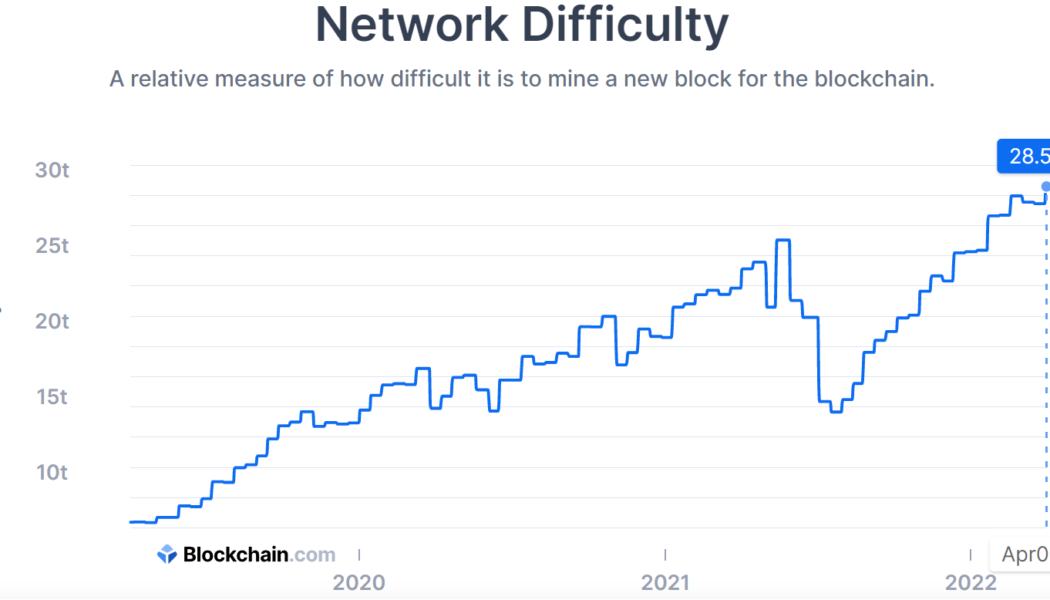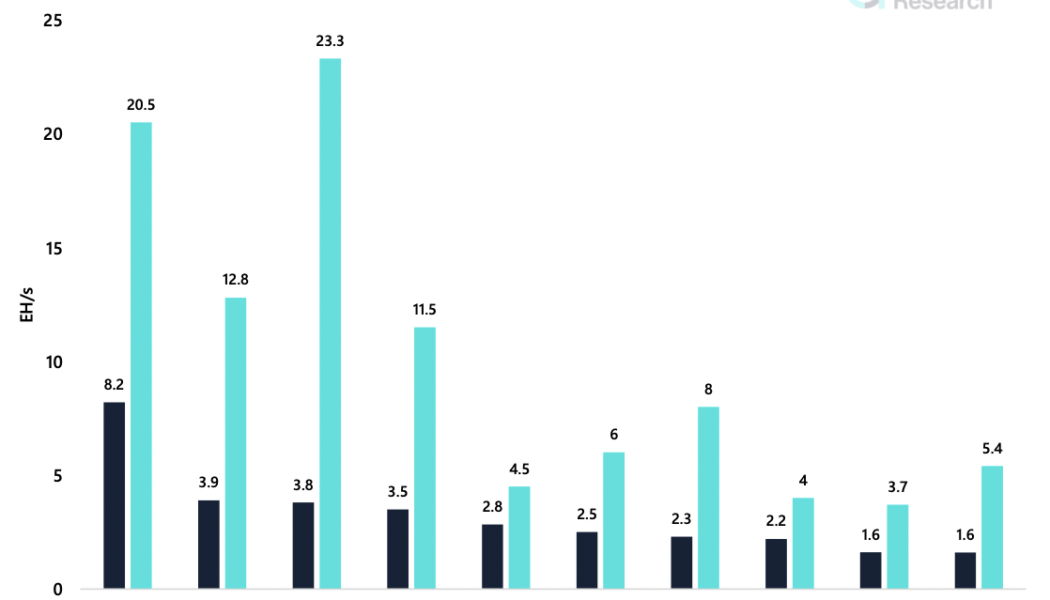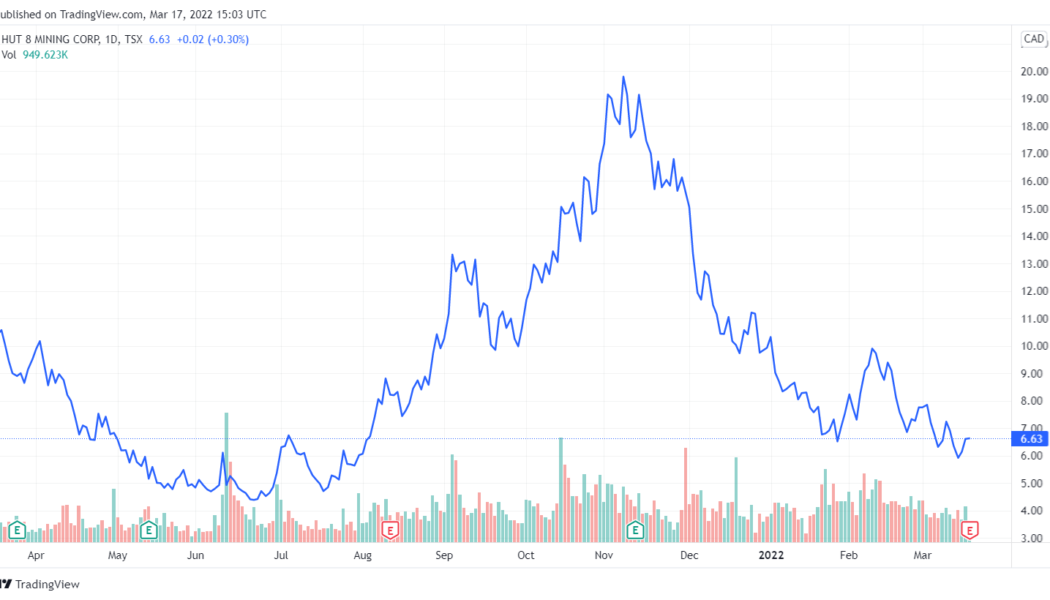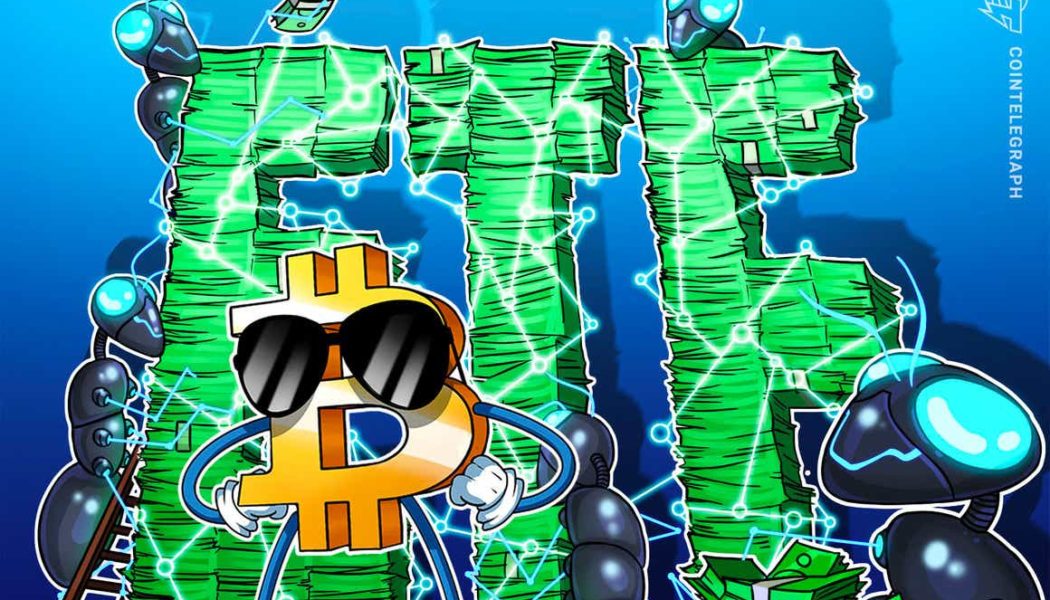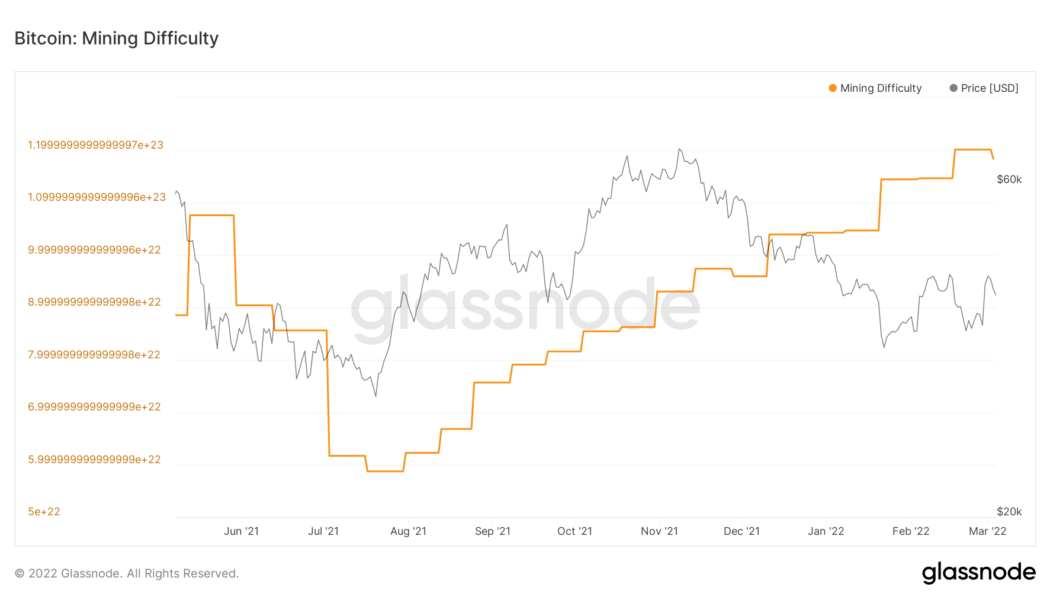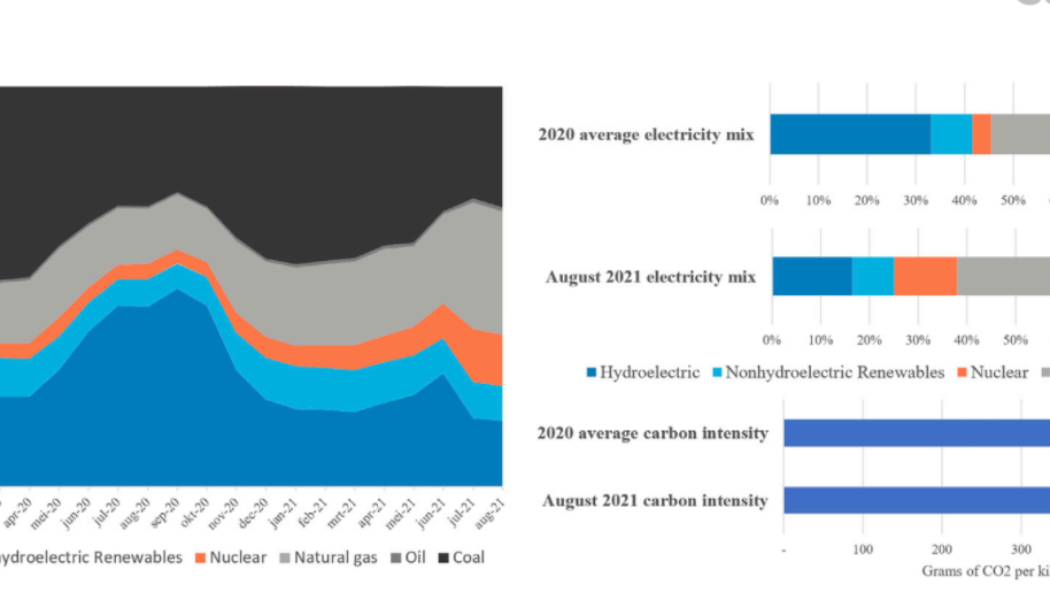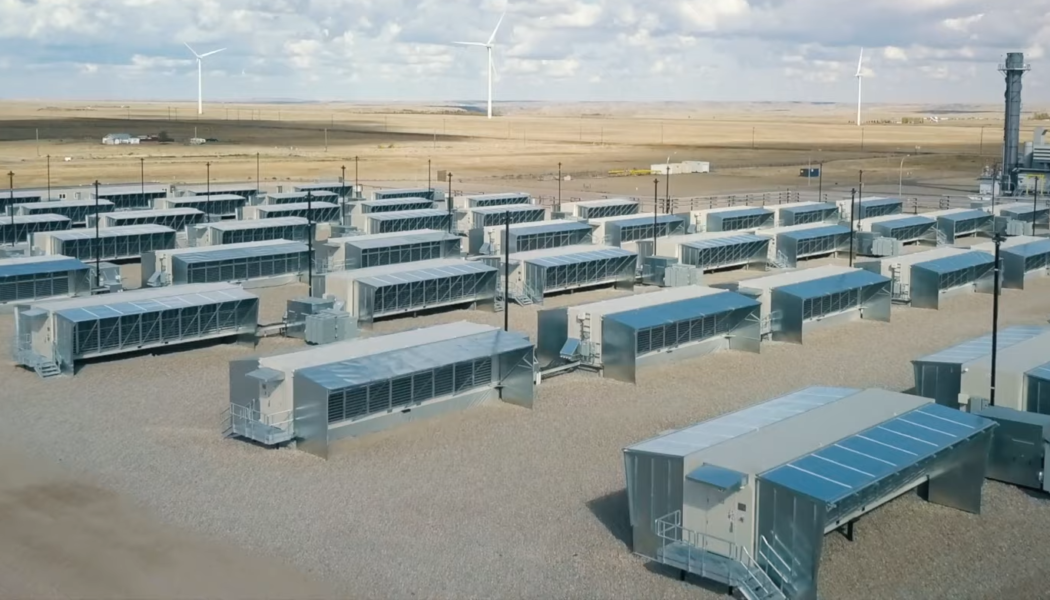Bitcoin Mining
Bitcoin network difficulty reaches all-time high as miners pursue 2M BTC
Just when the Bitcoin (BTC) miners helped release the 19th millionth BTC in circulation on Friday, the BTC network’s mining difficulty reciprocated by reaching an all-time high of 28.587 trillion. Bitcoin’s network difficulty correlates to the computational power required to mine BTC blocks, which currently demands an estimated hash rate of 201.84 exahash per second (EH/s), according to data from Blockchain.com. Bitcoin network difficulty. Source: Blockchain.com Supporting the spike in the network difficulty, Bitcoin’s hash rate maintained a stronghold throughout the year while breaking into an all-time high of 248.11 EH/s on Feb. 13. Bitcoin hash rate over the past three years. Source: Blockchain.com A higher hash rate ensures resilience against double-spending attacks, which is the...
The Bitcoin shitcoin machine: Mining BTC with biogas
Next time someone tries to poo-poo the renewable credentials of Bitcoin (BTC) mining, remember AmityAge Mining Farm. Founded by Gabriel Kozak and Dušan Matuska, the Bitcoin mining facility uses human and animal waste to generate electricity for mining. Matuska, the man “who met Satoshi Nakomoto”, told Cointelegraph that “methane from biodegradation processes runs our machines.” As human and animal waste isn’t running out any time soon, their BTC mining process is both environmentally friendly and renewable. Matuska and his colleague rigging up the Bitcoin miners in the plant. Source: Dušan Matuska According to Matuska, using renewable energies such as biogas “shows that we can really accelerate the adoption of these renewables and make their return on investment higher in the end...
Exxon Mobil is using excess natural gas to power crypto mining: Report
United States-based energy producer Exxon Mobil has reportedly been running a pilot program aimed at using the energy from excess gas to power crypto mining rigs — and it may be expanding its operations to four other countries. In a Thursday report, Bloomberg said Exxon Mobil had inked a deal with Crusoe Energy to use excess gas from oil wells in North Dakota to run Bitcoin (BTC) miners. The project reportedly uses 18 million cubic feet of natural gas per month — roughly 0.4% of the oil giant’s reported operations in the state, producing 158 million cubic feet of natural gas each day. The company launched the pilot program in January 2021 and is now reportedly considering expanding to Nigeria, Argentina, Guyana, and Germany in addition to launching a similar project in Alaska. Cointelegrap...
US Bitcoin mining firm turns to harmful coal waste for cleaner energy
Stronghold Digital Mining (SDIG), a crypto mining company in Pennsylvania, is turning waste from old power plants into energy to power hundreds of Bitcoin mining rigs. The company collects coal refuse, a leftover waste material from the process of coal mining, and burns it in what it says is an emissions-controlled environment at its energy generation facilities. Coal refuse can cause a raft of environmental problems, such as water and air pollution, and acid mine drainage, the acidic water which comes from coal mining operations. Collecting this waste and safely disposing of it while generating power for crypto mining is a productive way of tackling the problem. The state of Pennsylvania is the third-largest producer of coal in the United States, estimates put the amount of coal wastage a...
Stranded no more? Bitcoin miners could help solve Big Oil’s gas problem
The energy usage and environmental impact of Bitcoin (BTC) mining have been frowned upon and been under the scanner by various international financial institutions. The International Monetary Fund (IMF) mentions how Bitcoin mining consumes “vast amounts of computing power and electricity.” Bitcoin mining is an energy-consuming process, as it is a proof-of-work (PoW) blockchain network that involves providing cryptographic proof to the network that a quantified amount of a specific computational effort has been used. The information used to verify this is stored in a block to be accepted into the network by other participants. Elon Musk, one of the richest men in the world and the co-founder and CEO of Tesla, in February 2021 announced that the car manufacturing company will accept Bi...
Miners that hodl the most Bitcoin are ‘relentlessly expanding’
Bitcoin (BTC) miners are holding more and more Bitcoin while “relentlessly expanding” their operations in 2022. A report by Arcane Research indicates that publicly listed Bitcoin miners are “constantly looking for expansion opportunities,” as they “plan to increase hashrate faster than the whole network in 2022.” Publicly listed Bitcoin miners projected hashrates. Source: Arcane Research 44.95% of the global hash rate derives from North American miners, according to the latest figures from the Cambridge Bitcoin electricity consumption index. With the massive projected increases in target hash rate among the publicly traded Bitcoin miners, it‘s “likely to increase.” Jaran Mellerud, an analyst for Arcane Research, told Cointelegraph that “most publicly listed miners pursue a hodl strat...
Crypto miner Hut 8 posts record revenue as BTC holdings surge 100%
Canadian cryptocurrency miner Hut 8 posted mixed financial results on Thursday, as revenue and mining profitability soared while overall net income declined — underscoring a volatile end to the year for Bitcoin (BTC) and the broader digital asset market. The Toronto-based company, which trades publicly on the Nasdaq and TSX, saw its revenues surge to $45.69 million ($57.901 million CAD) in the fourth quarter of 2021, up from $10.25 million ($12.986 million CAD) the year before. Full-year revenues were $137.1 million, up 326% compared with 2020. Despite generating a large profit from mining activities, the company posted an overall loss of $0.53 ($0.67 CAD) per share in the fourth quarter. Losses amounted to $0.43 ($0.54 CAD) per share in all of 2021. Shares of Hut 8, which trade unde...
Valkyrie Investments‘ Leah Wald on Bitcoin ETFs and the future of digital assets
Cointelegraph sat down with Leah Wald, CEO of digital asset investment firm Valkyrie Investments, to learn more about the importance of a Bitcoin (BTC) exchange-traded fund (ETF) and the future of digital assets. For context, Valkyrie Investments was launched in 2020 and is one of the only asset managers to have three Bitcoin-adjacent ETFs trading on the Nasdaq. Valkyrie launched a Bitcoin Strategy ETF in October 2021 that offered indirect exposure to BTC with cash-settled futures contracts following a United States Securities and Exchange (SEC) approval for a similar ETF from ProShares. Valkyrie also has a balance sheet opportunities ETF that invests in public companies with exposure to Bitcoin. In addition, the investment firm’s Bitcoin Miners ETF began trading on the Nasdaq o...
European Parliament will hold vote on crypto bill without PoW provision
The parliament of the European Union has scheduled a vote on a framework aimed at regulating cryptocurrencies after addressing concerns over proof-of-work mining. In a Monday Twitter thread, European Parliament Committee on Economics and Monetary Affairs member Stefan Berger said the committee will vote on the Markets in Crypto Assets, or MiCA, framework on March 14 following the submission of a final draft of the bill. As the rapporteur — the person appointed to report on proceedings related to the bill — Berger said the legislation will no longer include text that some had interpreted as a possible ban on proof-of-work crypto mining. “With MiCA, the EU can set global standards,” said Berger. “Therefore, all those involved are now asked to support the submitted draft & to vote for MiC...
Bitcoin mining difficulty drops for the first time this year
For the first time since November 2021, the Bitcoin (BTC) mining difficulty adjustment has dropped, correcting 1.49%. The move follows a succession of six consecutive positive difficulty adjustments, in which the mining difficulty and hash rate hit all-time highs. The average hash rate over the past two weeks fell to 197.19 exahashes per second (EH/s), making the average block time exceed the 10-minute target at 10 minutes 9 seconds. As a result of the difficulty adjustment, miners competing to solve the next valid block found it marginally easier. Bitcoin mining difficulty marginally dropping after an 8 month climb. Source: Glassnode The difficulty adjustment is one of the Bitcoin protocol’s most prominent features. Every two weeks or 2,016 confirmed blocks, the difficulty for mining a ne...
Bitcoin network’s carbon emission jumped 17% after China ban: Report
Bitcoin network’s proof-of-work mining consensus has been a topic of environmental, social and governance debates for a long time, and a new study may only add to the growing controversy around Bitcoin’s carbon footprint. A new research report titled “Revisiting Bitcoin’s carbon footprint” published in the peer-reviewed scientific journal Joules has highlighted that the Chinese crypto mining ban might not have contributed to the reduction in the carbon footprint of the Bitcoin network as propagated by many Bitcoiners; on the contrary, it has increased by 17%. China was the primary hub for Bitcoin miners before May 2021 and accounted for more than 60% of the total Bitcoin network hash rate. However, the blanket ban imposed by the government led to the migration of most of the mining fa...
Canada to host Bitfury’s new 28MW crypto mining facility
Blockchain company Bitfury announced the launch of a new crypto-mining data center in Ontario, Canada. The new crypto mining center adds to the list of existing Canadian sites currently operating in Drumheller, Alberta and Medicine Hat. Bitfury partnered with Hut 8 Mining, a Toronto Stock Exchange-listed Bitcoin (BTC) mining company, to set up mining operations across North America. The new crypto mining facility in Ontario is expected to operate at 16 megawatts (MW) by the end of this month. Bitfury mining facility in Medicine Hat. Source: Hut 8 According to the announcement, Bitfury has plans to add 12MW capacity in the coming months, which will bring up the total capacity of the mining facility to 28MW by May end. However, the company highlighted that the facility could be potentia...
